East Asian Art Quiz 1
1/60
There's no tags or description
Looks like no tags are added yet.
Name | Mastery | Learn | Test | Matching | Spaced |
|---|
No study sessions yet.
61 Terms
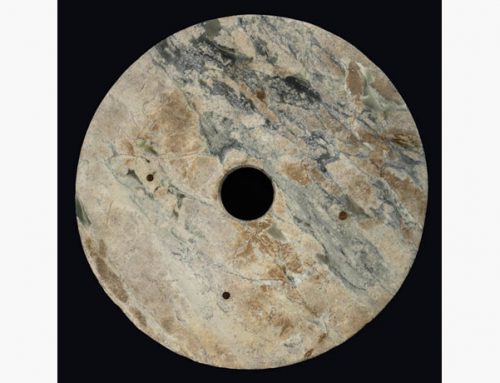
Name and Era?
Bi Disc - Neolithic
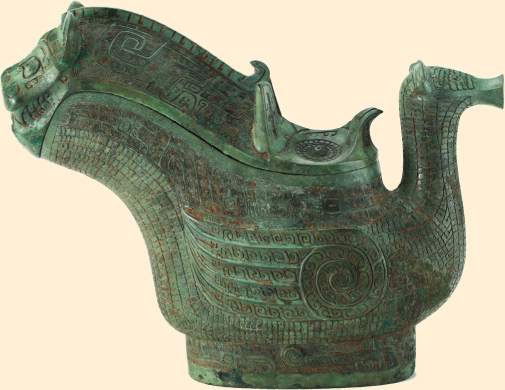
Name and Era?
Wine vessel in form of a composite animal - Shang Dynasty
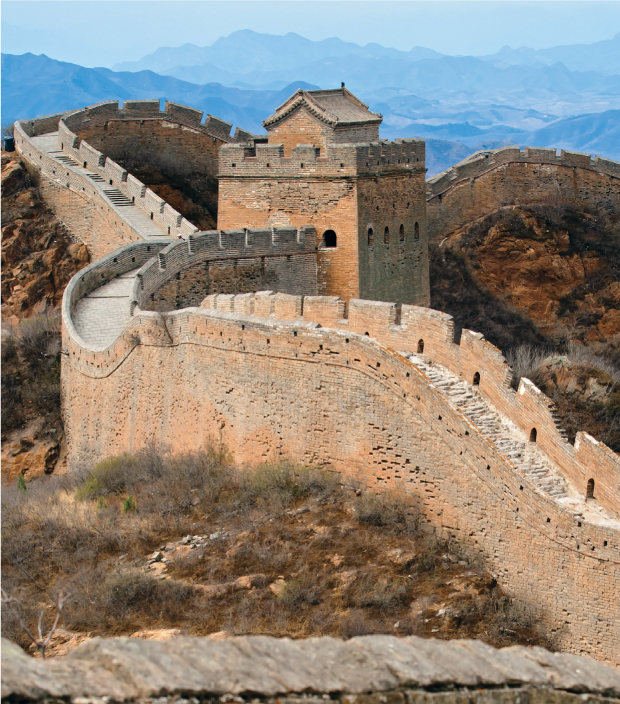
Name and Era?
The Great Wall - Qin Dynasty
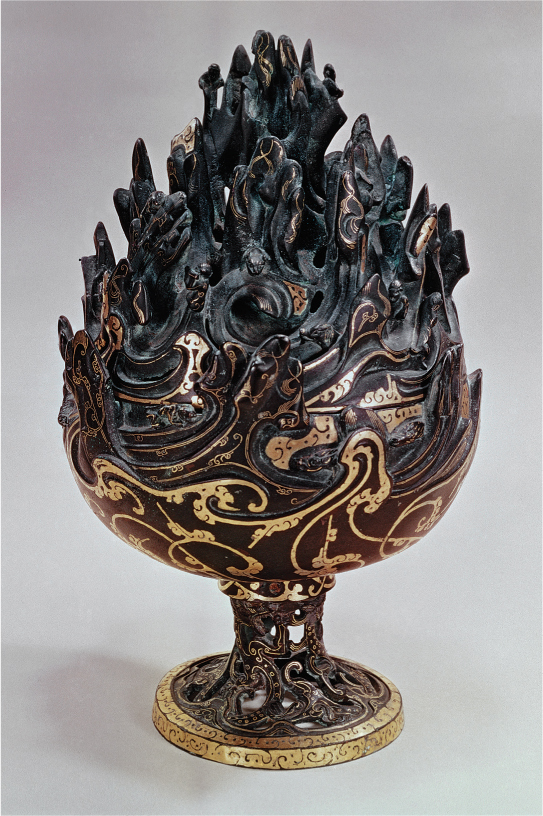
Name and Era?
Hill-shaped incense burner - Western Han Dynasty
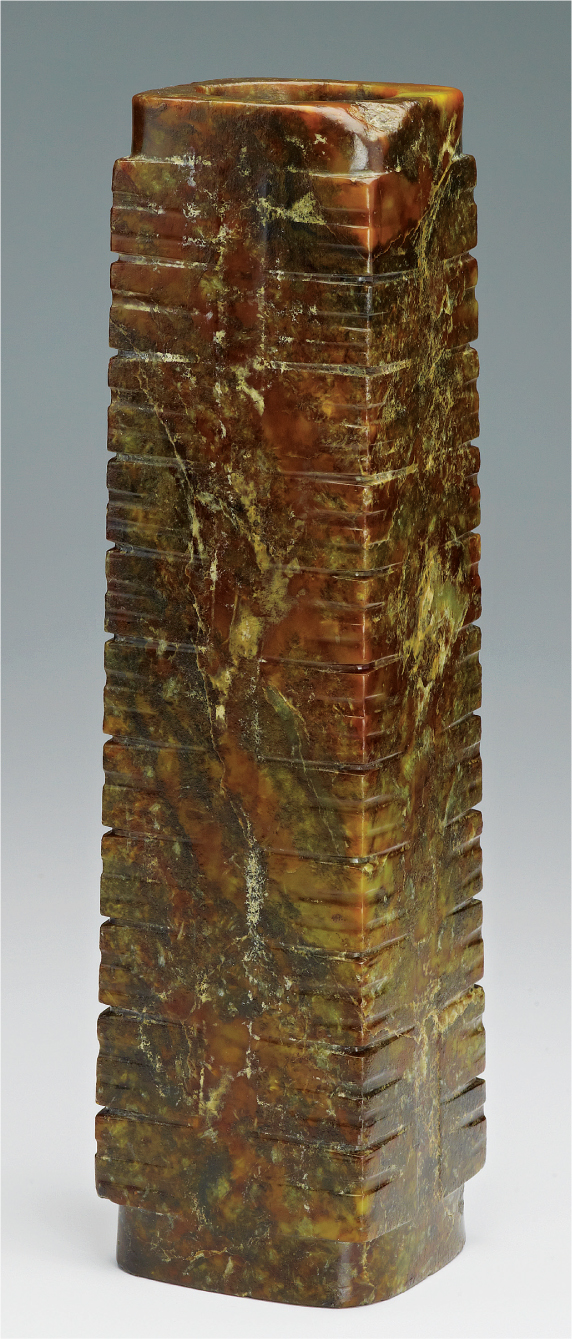
Name and Era?
Jade cong - Neolithic
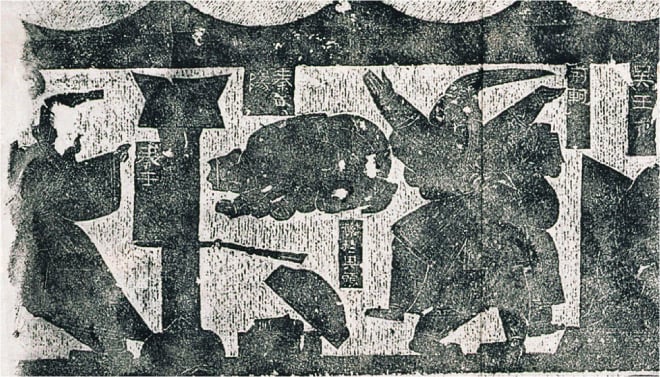
Name and Era?
Jing Ke’s assassination attempt - Eastern Han Dynasty
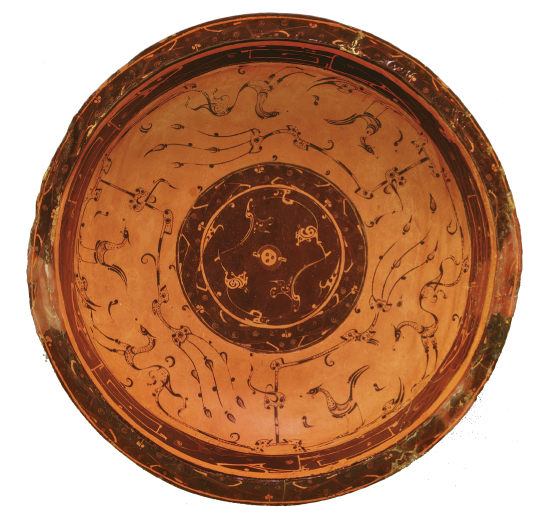
Name and Era?
Lacquerware bowl - Eastern Zhou (South)
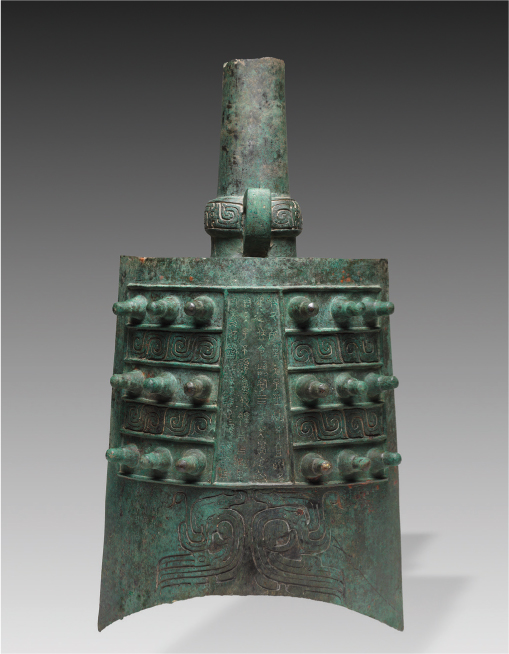
Name and Era?
Master Lai’s bell - Western Zhou Dynasty
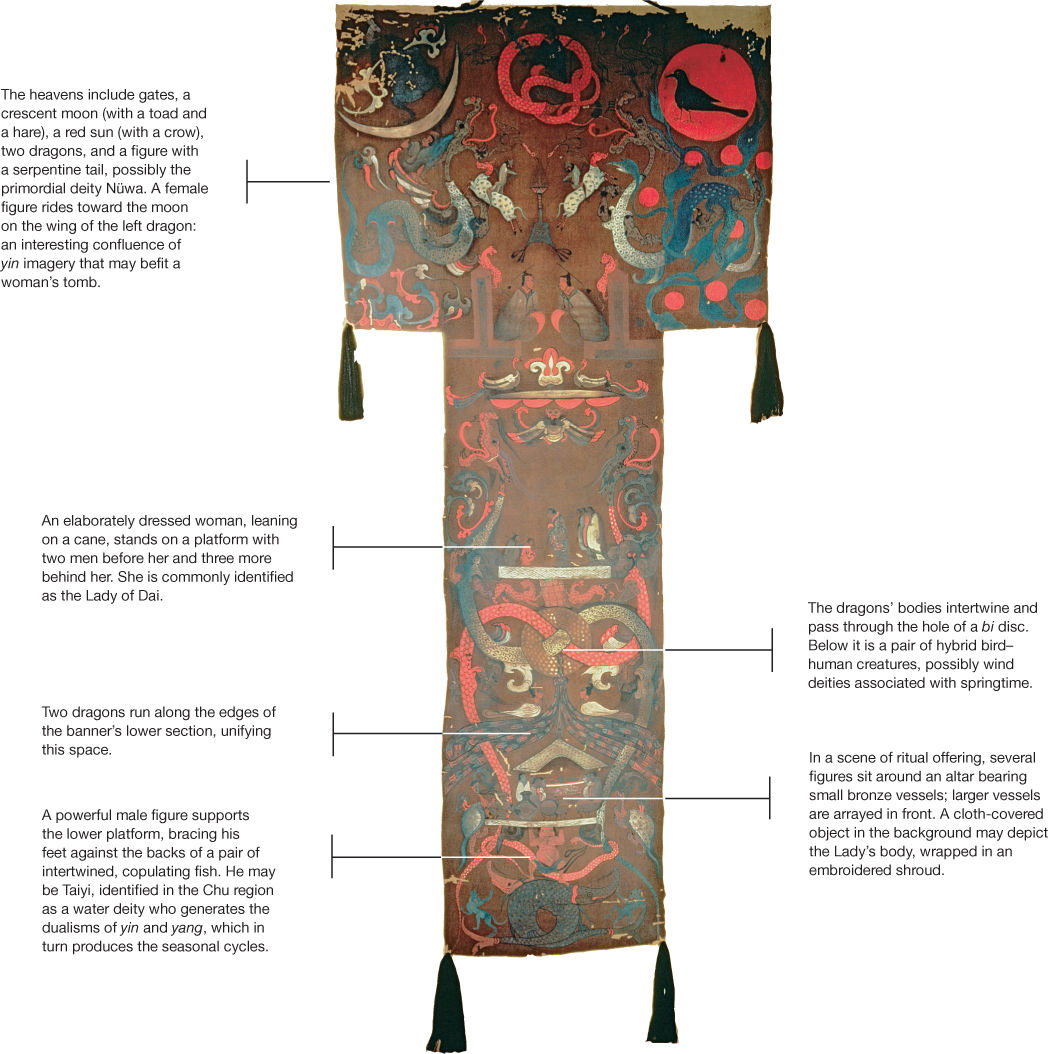
Name and Era?
Mawangdui To. #1 - Western Han Dynasty
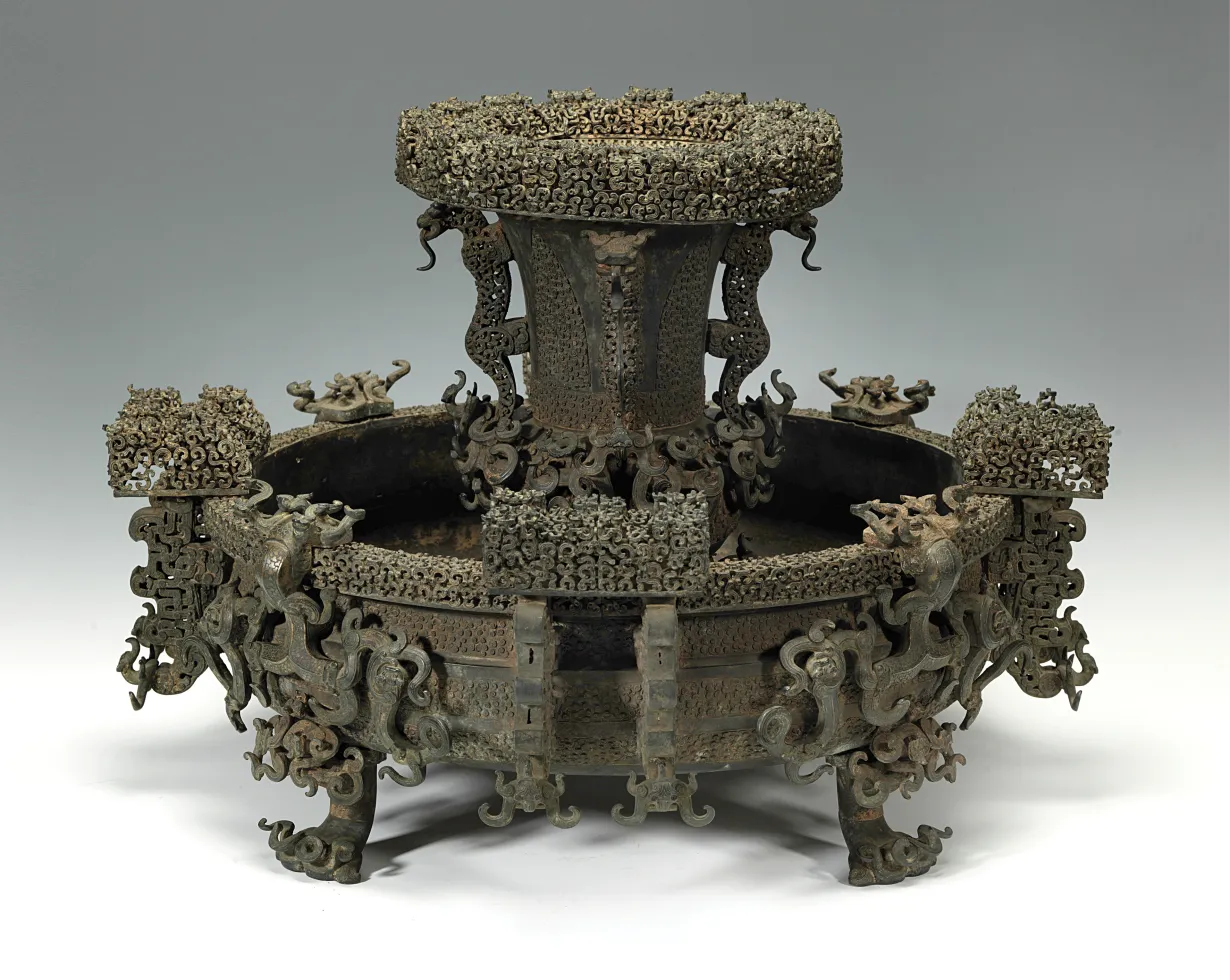
Name and Era?
Wine vessel - Eastern Zhou
Define shamanism
a belief where a shaman had the ability to communicate with the human and spiritual world. Relies on animals as helpers
What is the Hun soul
The half of the soul that flies to heaven and leaves the body. Ancestor worship was directed towards this sould
What is the po soul
The other half of the soul that stays in the tomb with the body
What is the Fu Hao Tomb
The tomb of the warrior-queen Fu Hao found in Anyang and contained oracle bones.
What is Confucianism
A philosophy that focused on individuals respecting the social order and maintaining filial piety so that there is social harmony
What is the Longshan Culture
The culture in the East China during the Neolithic Era known for its thin black pottery
What were the influences from the nomads
Gold/silver inlay in bronzes, naturalistic animals depicted, use of horses
What is a taotie
A motif of a frontal facing abstract creature used on Shang/Neolithic bronzes
Where is the Fu Hao Tomb located
Anyang however not in the royal cemetery with all the other kings
What did the Fu Hao Tomb contain
Shang bronzes (piece-mould) - used to show status, human sacrifices, horses/chariots,
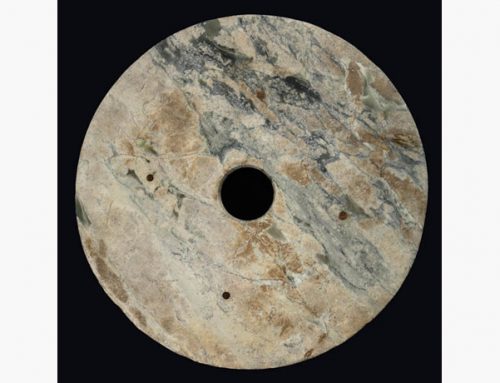
Site Found?
Lake Tai Region
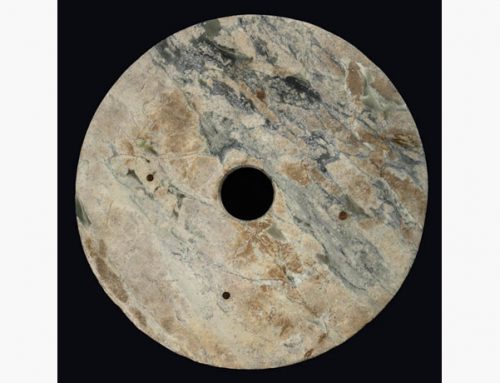
Subject?
Flat disc with a hole in the middle
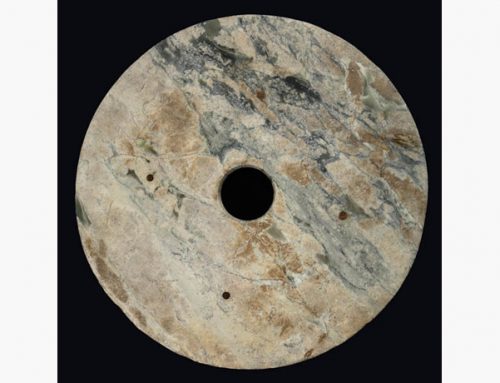
Material & Technique
Jade (nephrite), using an abbrasive
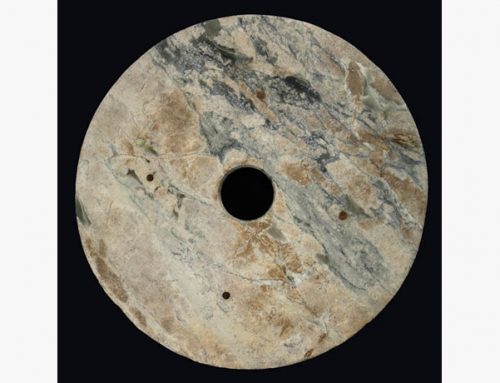
Significance?
For burials - roundness evokes Heaven
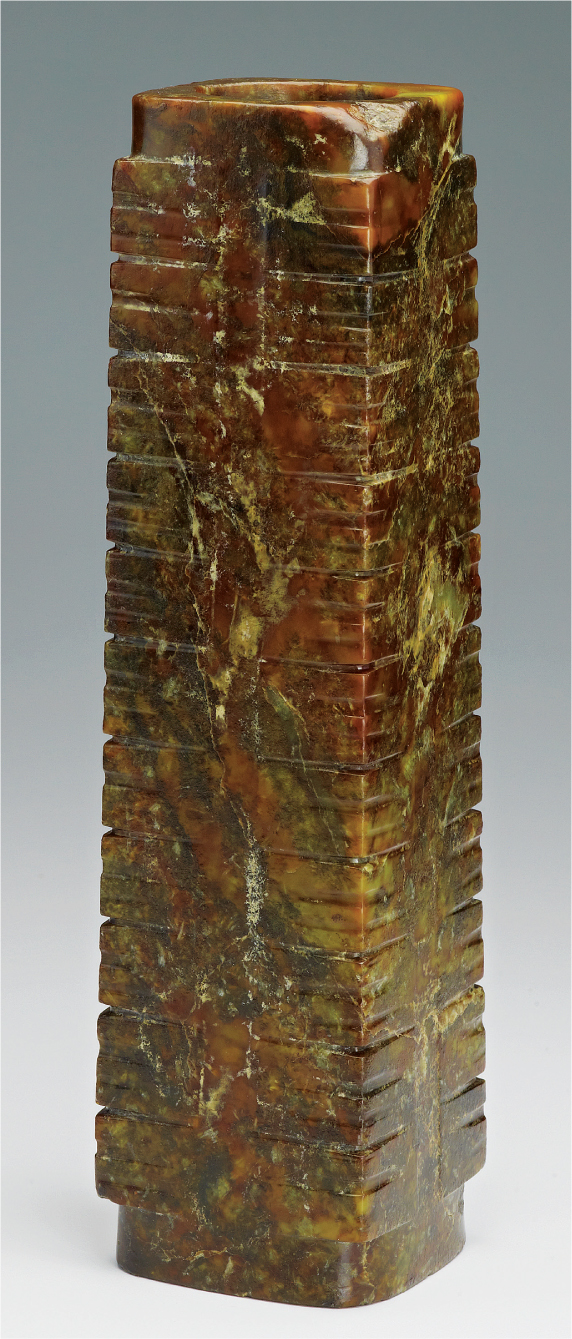
Subject?
Square tube with a round inner space
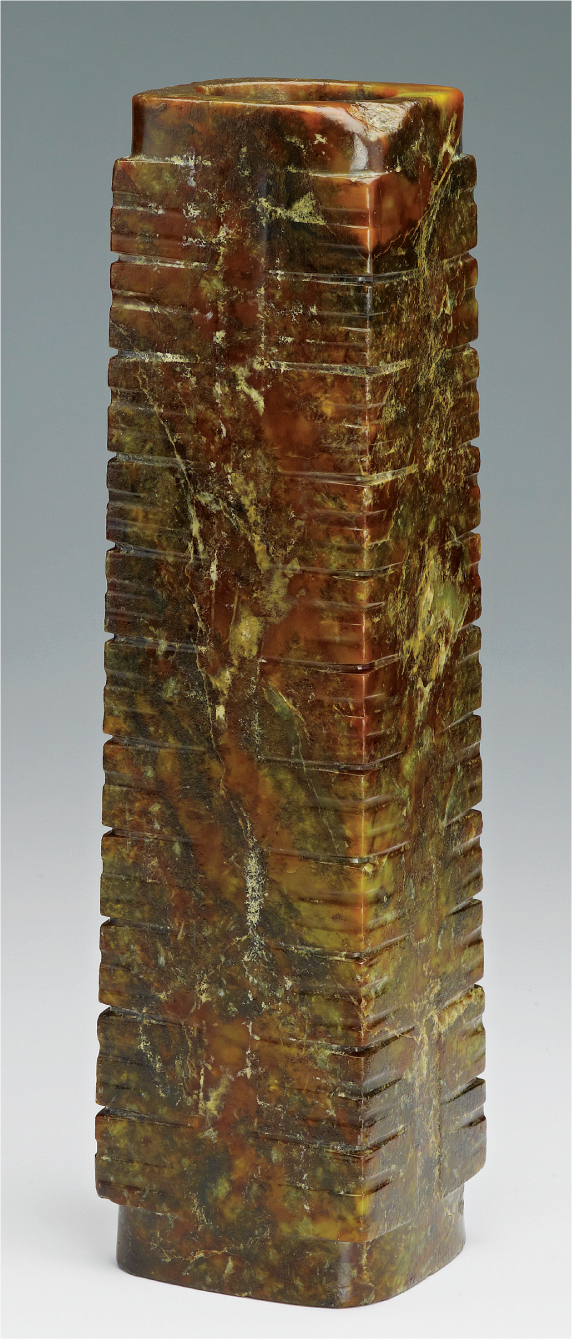
Site found?
Lake Tai region
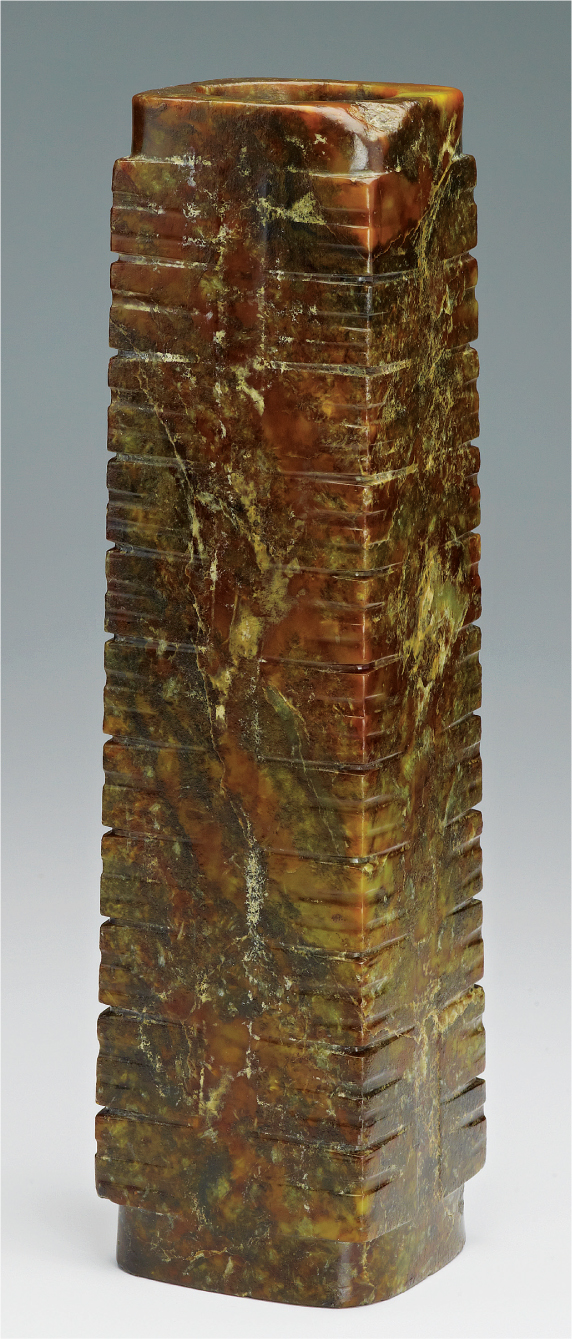
Materials & Technique?
Jade (nephrite) - Rubbing with an abbrasive
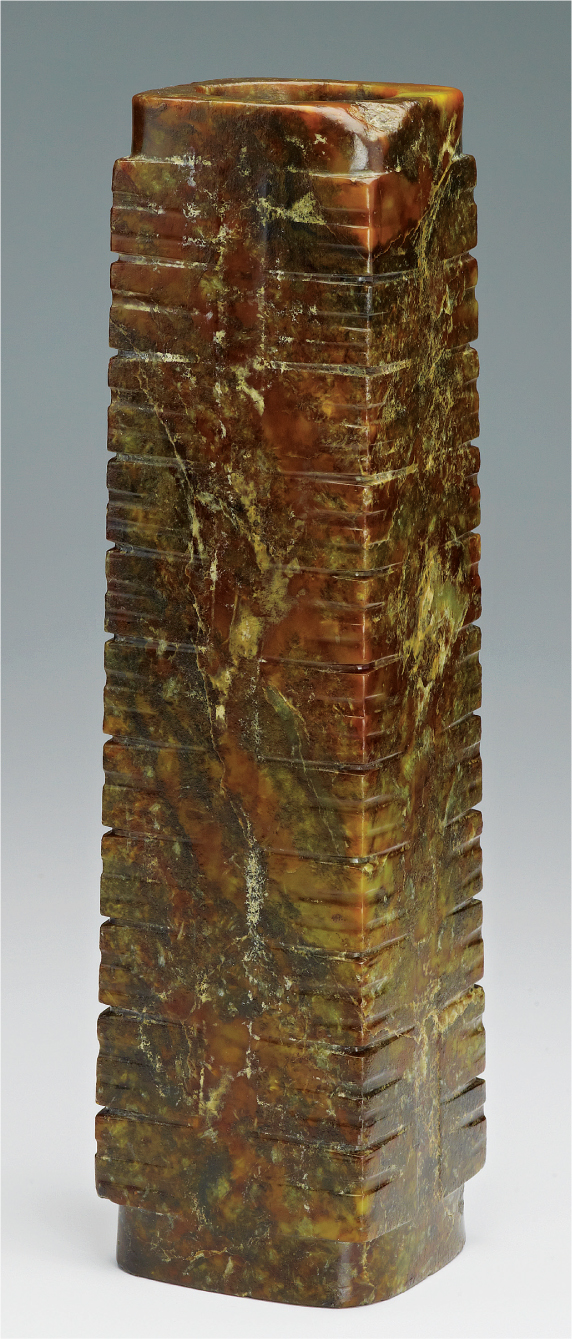
Significance?
Used in burials- represented the pairing of Heaven and Earth
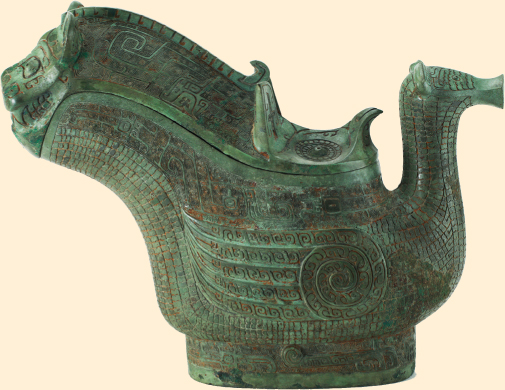
Subject?
Tiger and owl face on the spout, coiled snakes on the side
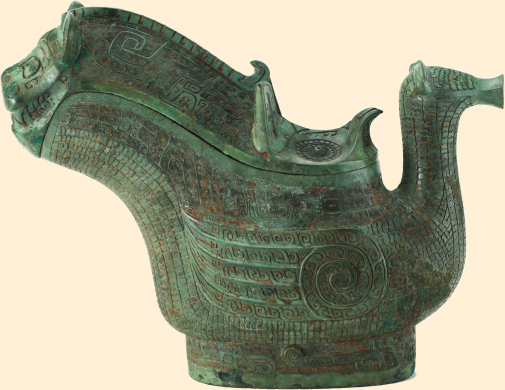
Site found?
Anyang, Henan Province
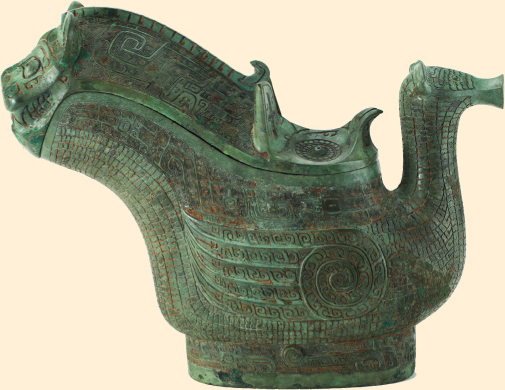
Material & Technique?
Bronze - Piece-mould Technique
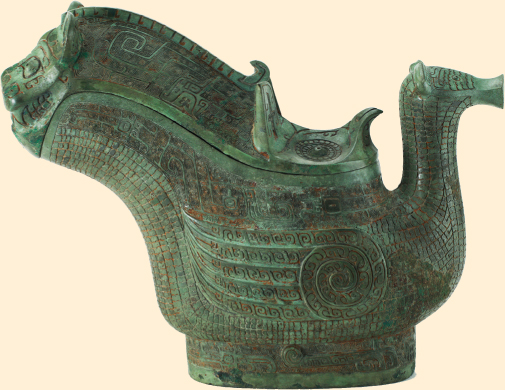
Significance?
Used in rituals of ancestor worship
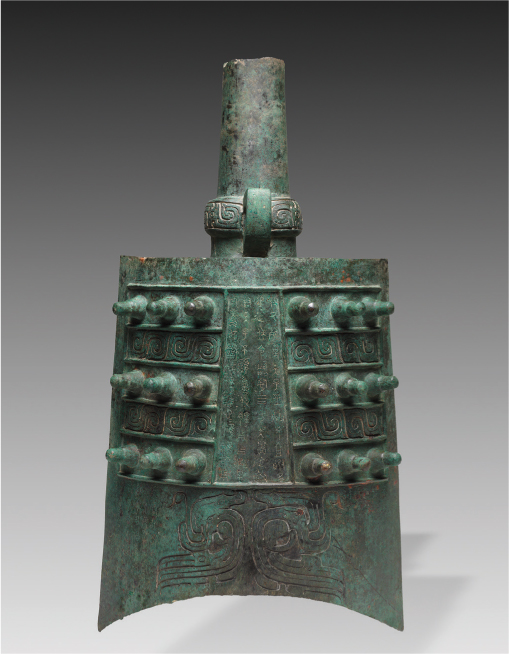
Subject?
A bell with protruding pieces on it sides and spiral carvings on the bell’s body
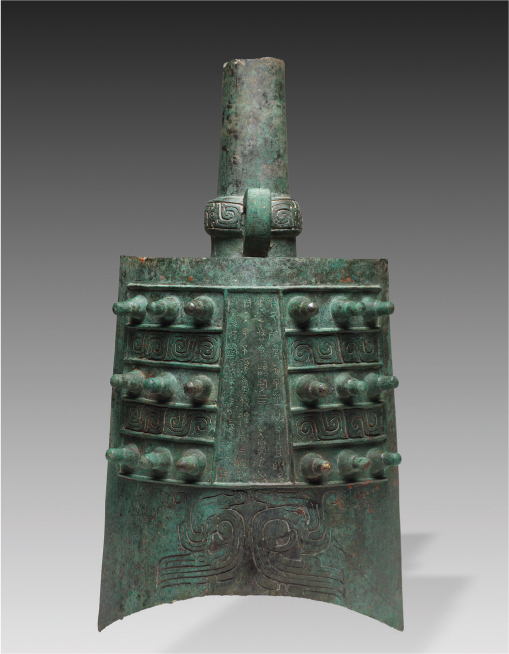
Site found?
Meixian
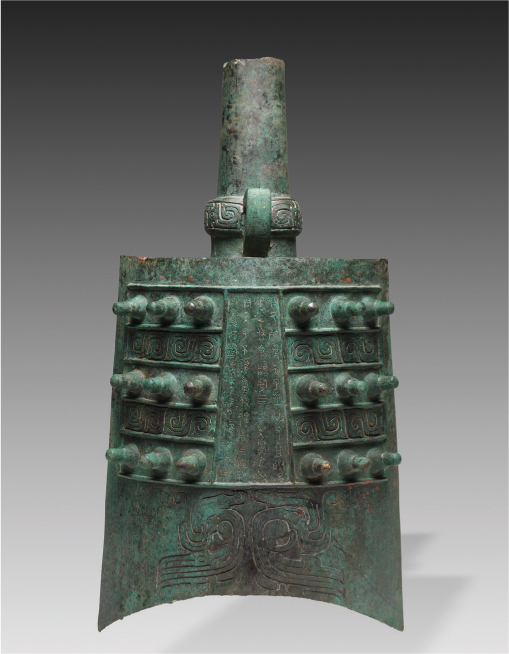
Material & Technique?
Bronze - piece-mould casting
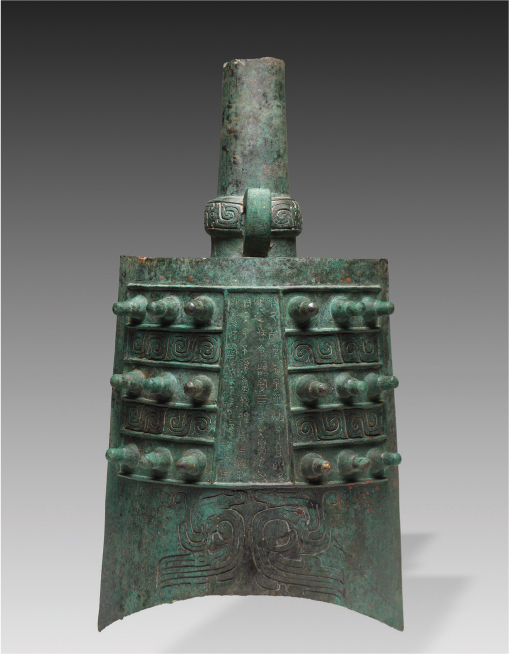
Significance?
Used for ancestor worship and inscriptions that say the king received the mandate of Heaven. Casting needing to be specific in order to make a specific tone
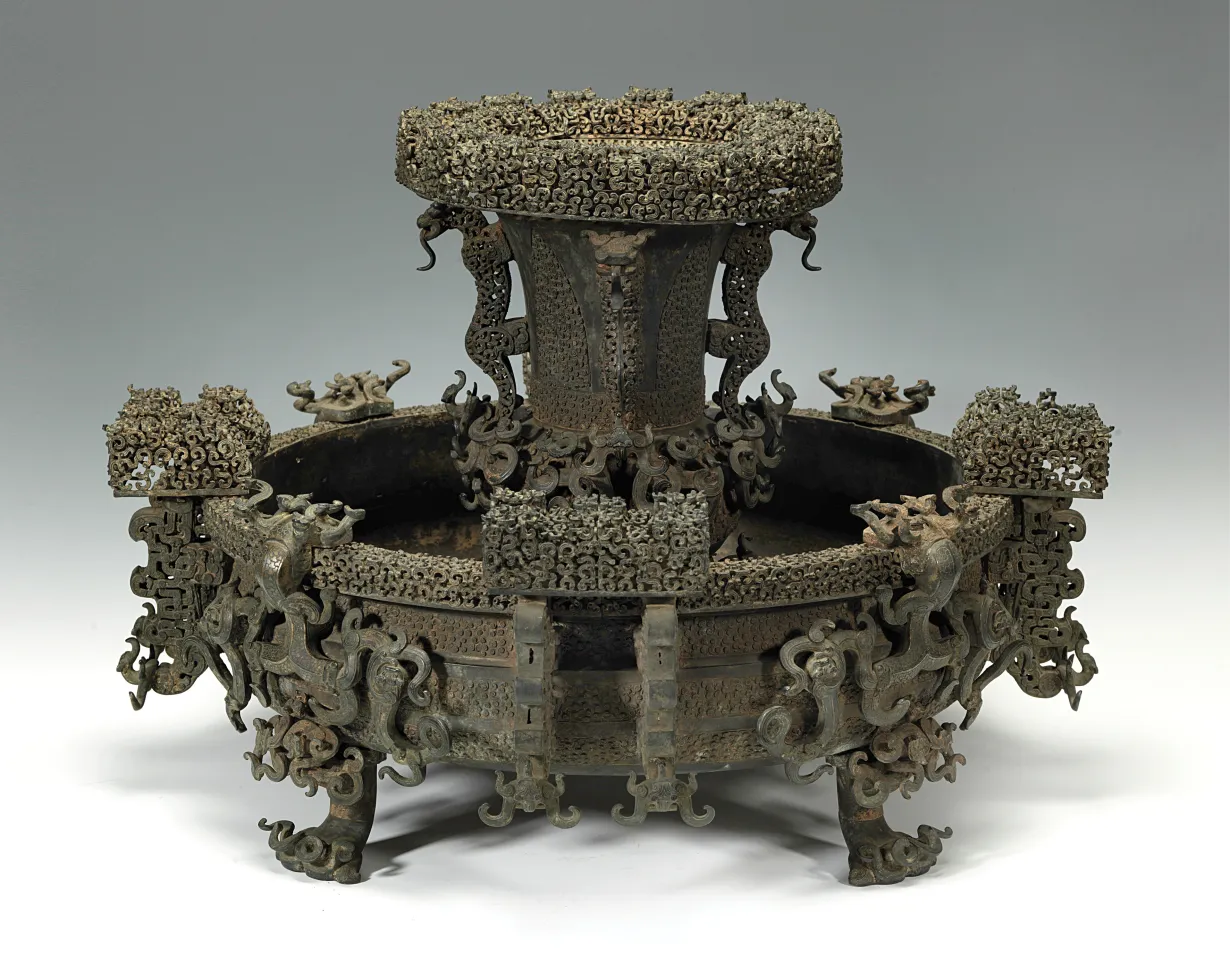
Subject?
A wine vessel and water basin with interlacing dragons/snakes
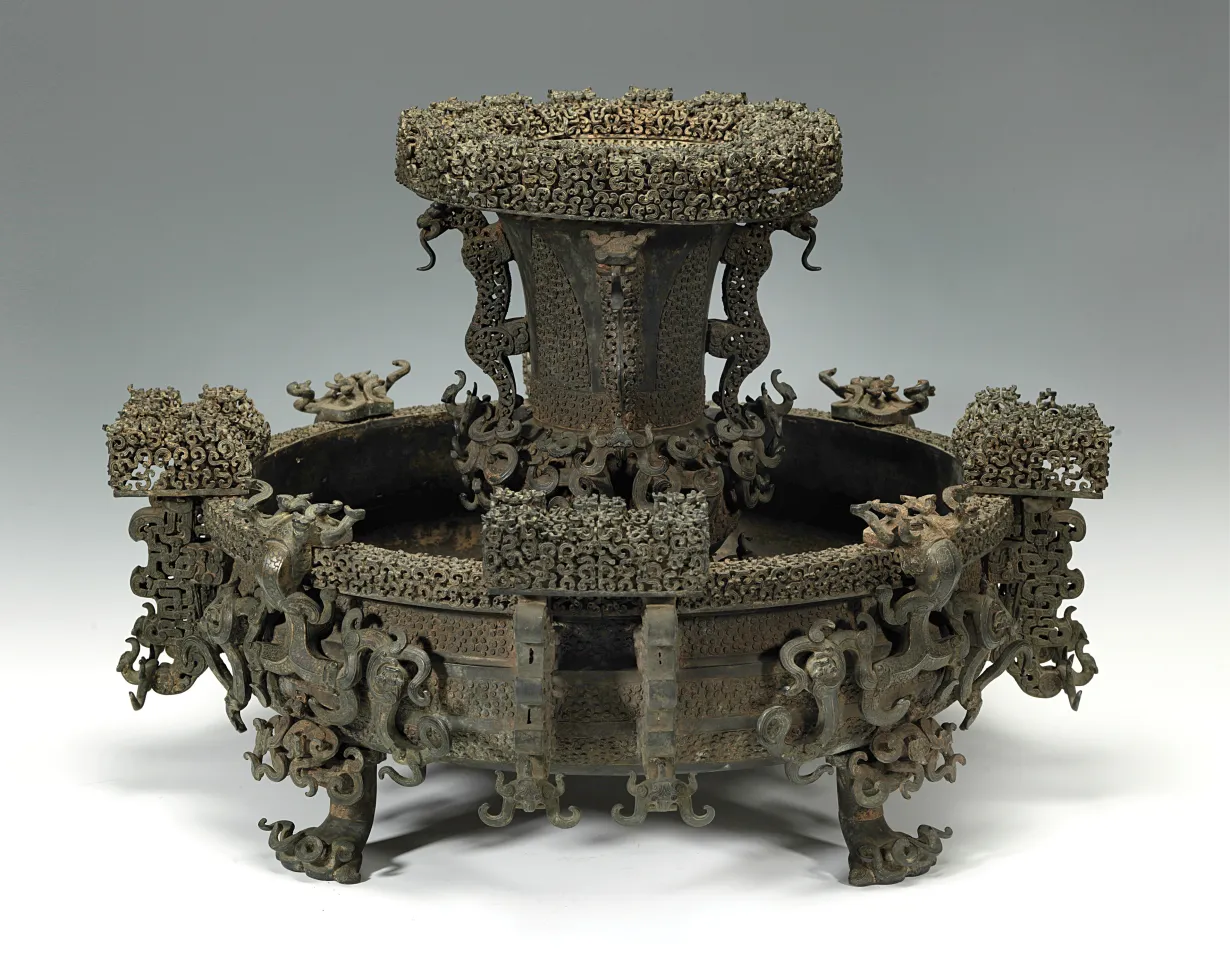
Site found?
Leigudun, Hubei Province
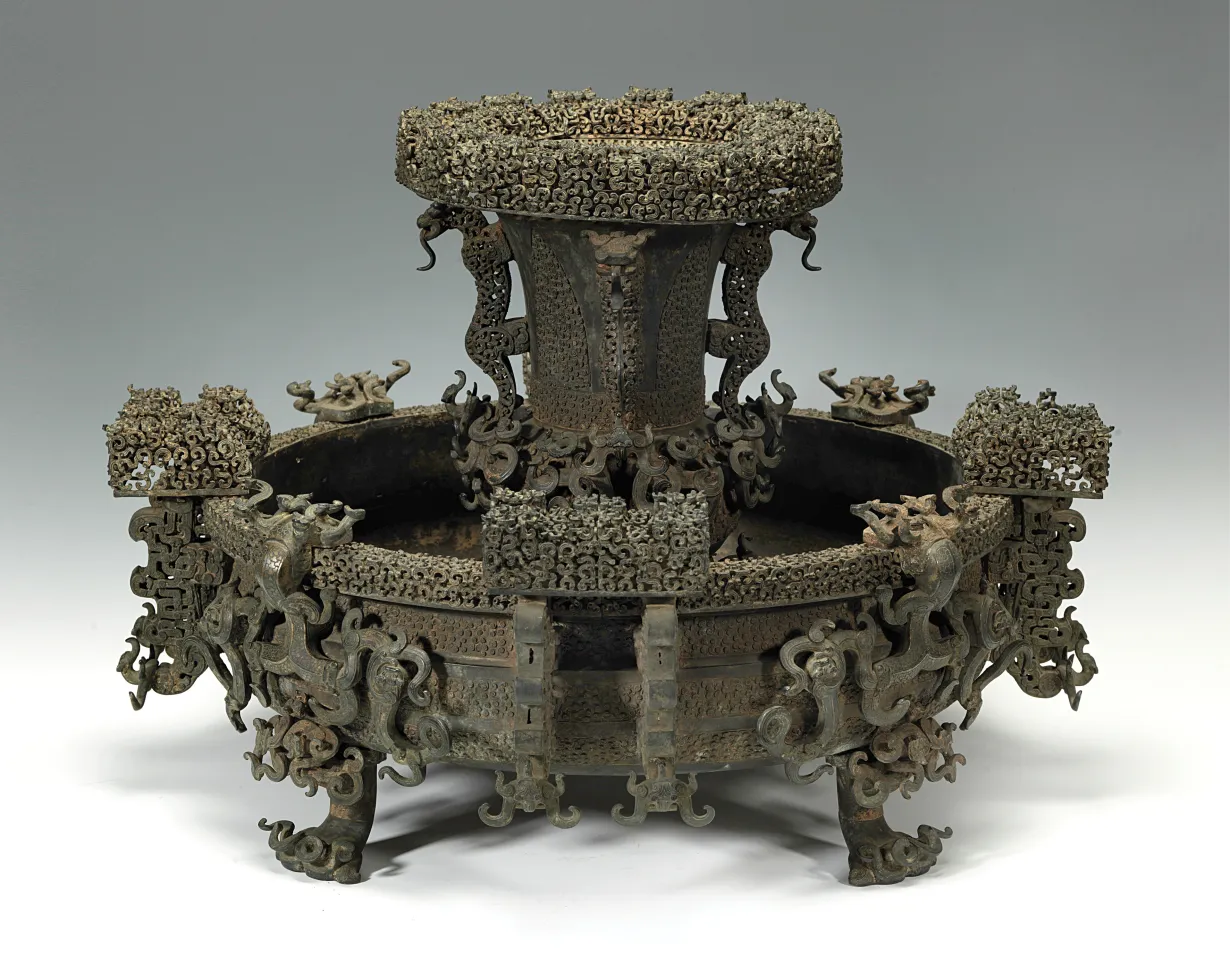
Material & Technique?
Bronze - lost wax casting
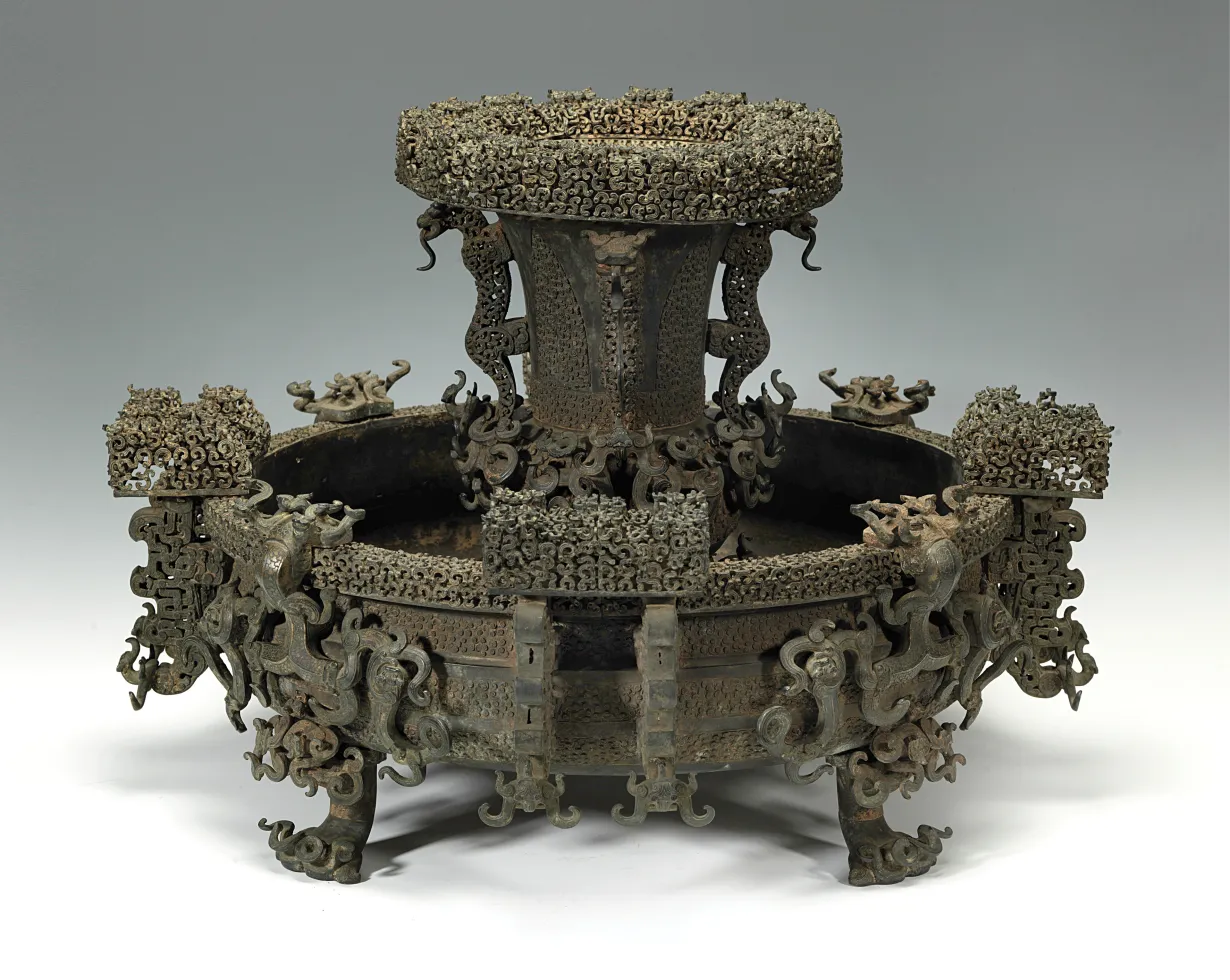
Significance?
Showed the difference of bronze casting between the North and South and was indicative of the shift from religious based to an emphasis of status
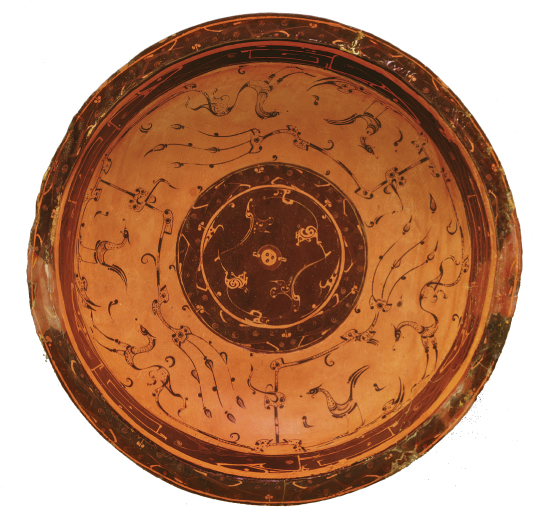
Subject?
A red and black colored bowl with swirling and thin brushwork of long-tailed birds and dragons.
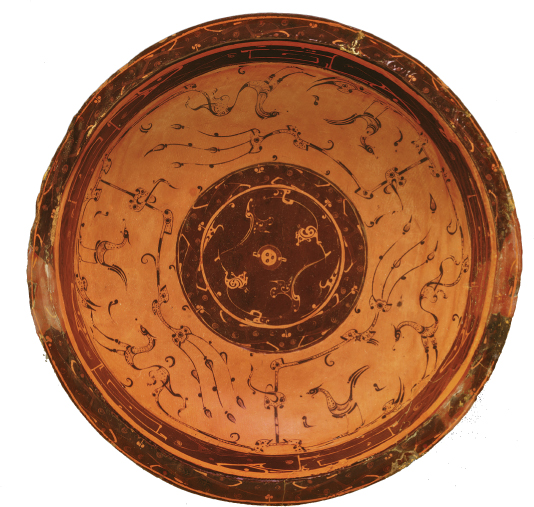
Site found?
Changsha, Hunan Province
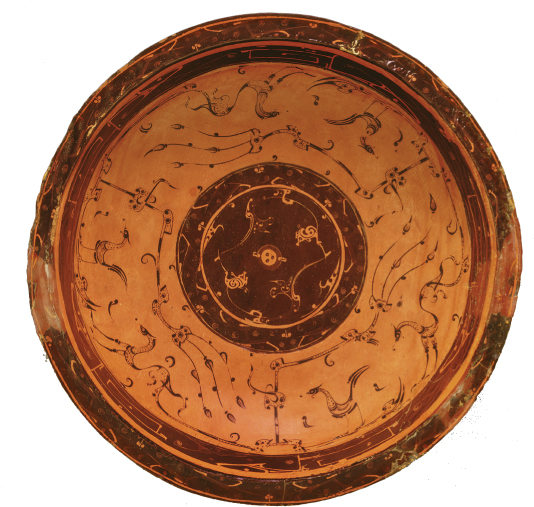
Material & Technique?
Carved wood and painted lacquer
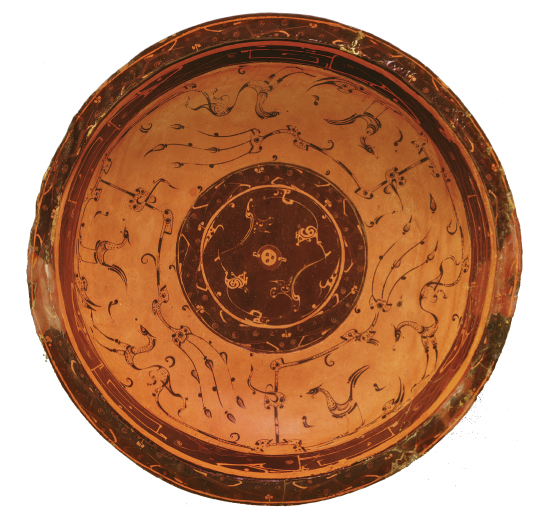
Significance?
Used in tombs
Lacquer prevented wood decay
Lacquerware specific to Chu Region
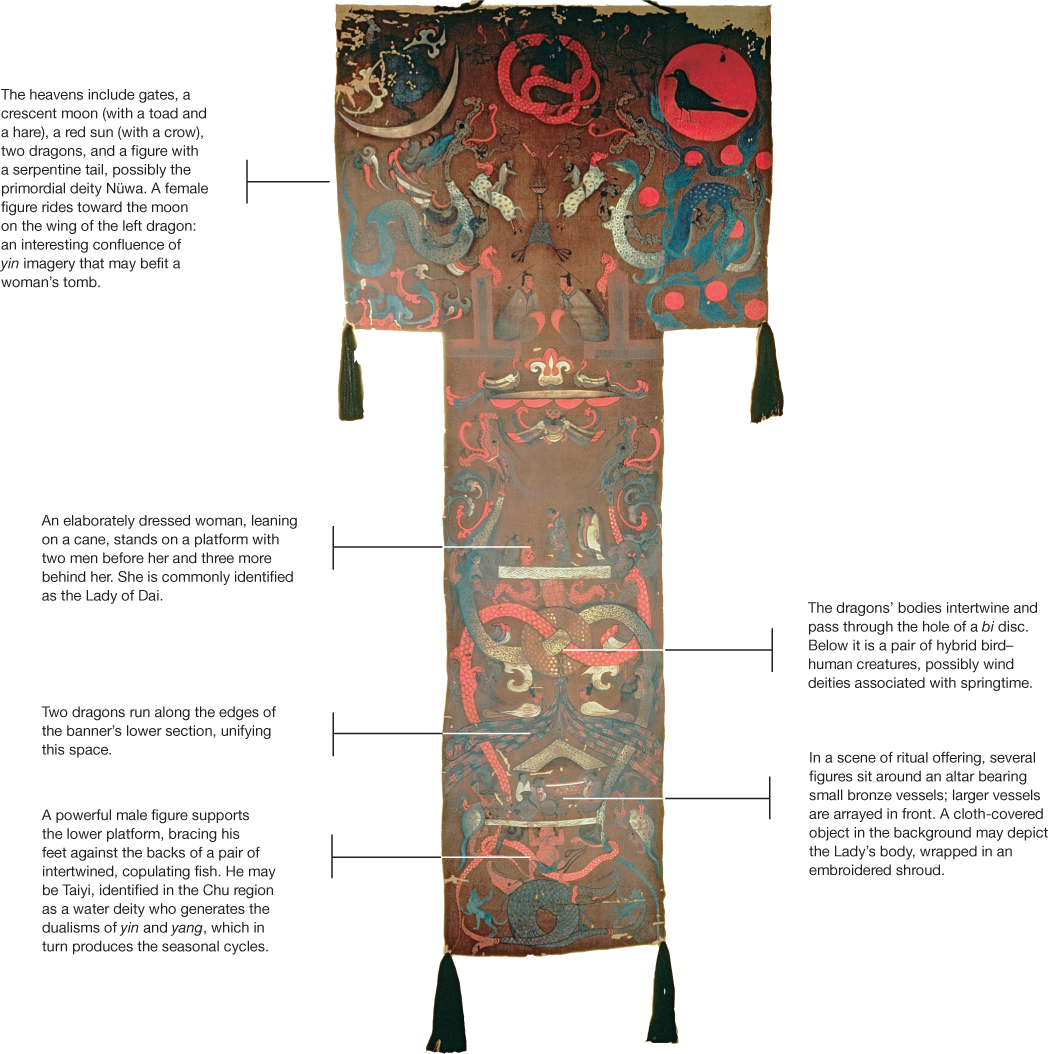
Subject?
Lady Dai’s silk banner
3 registers
Heaven w/ suns and moon
Humans and a scene of mourning
The underworld - holding Lady Dai’s body
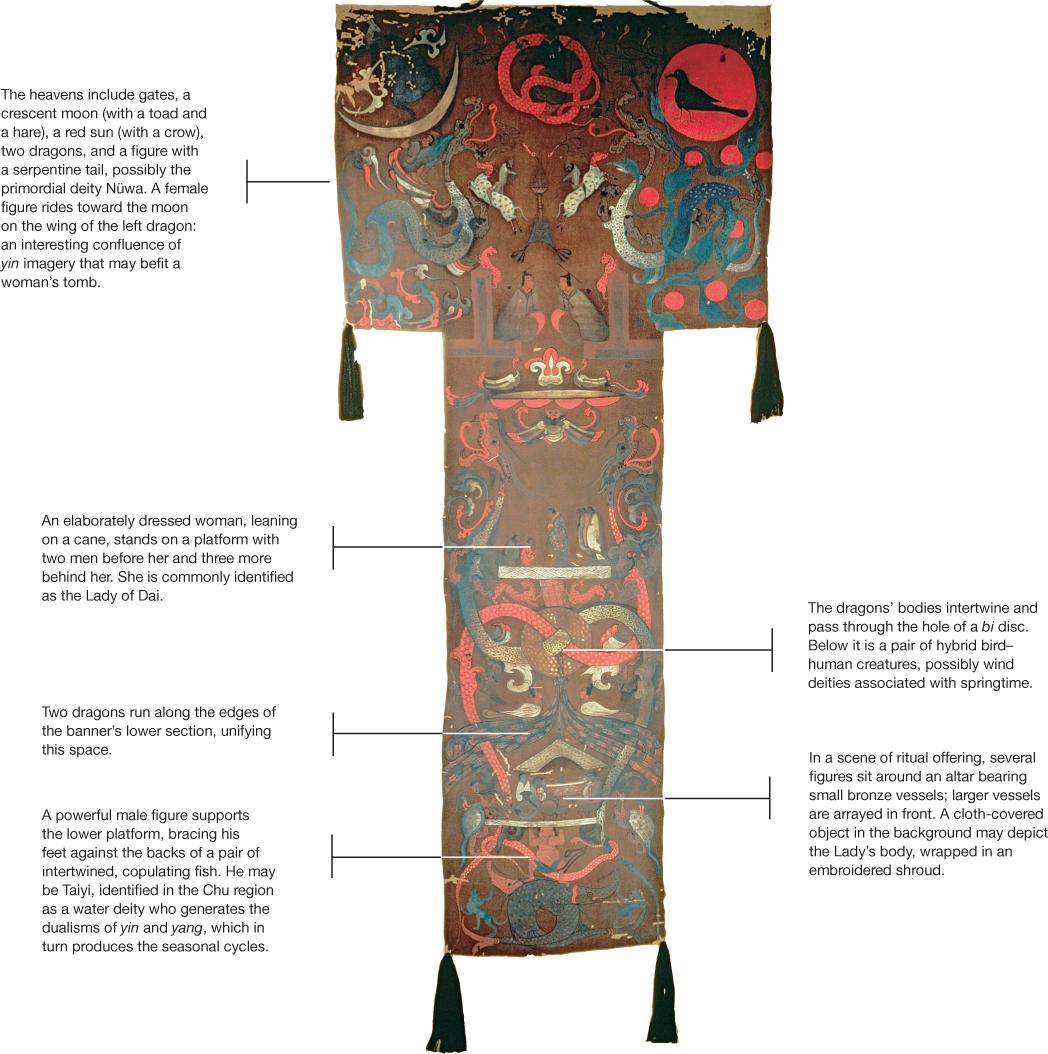
Site found?
Mawangdui, Hunan Province
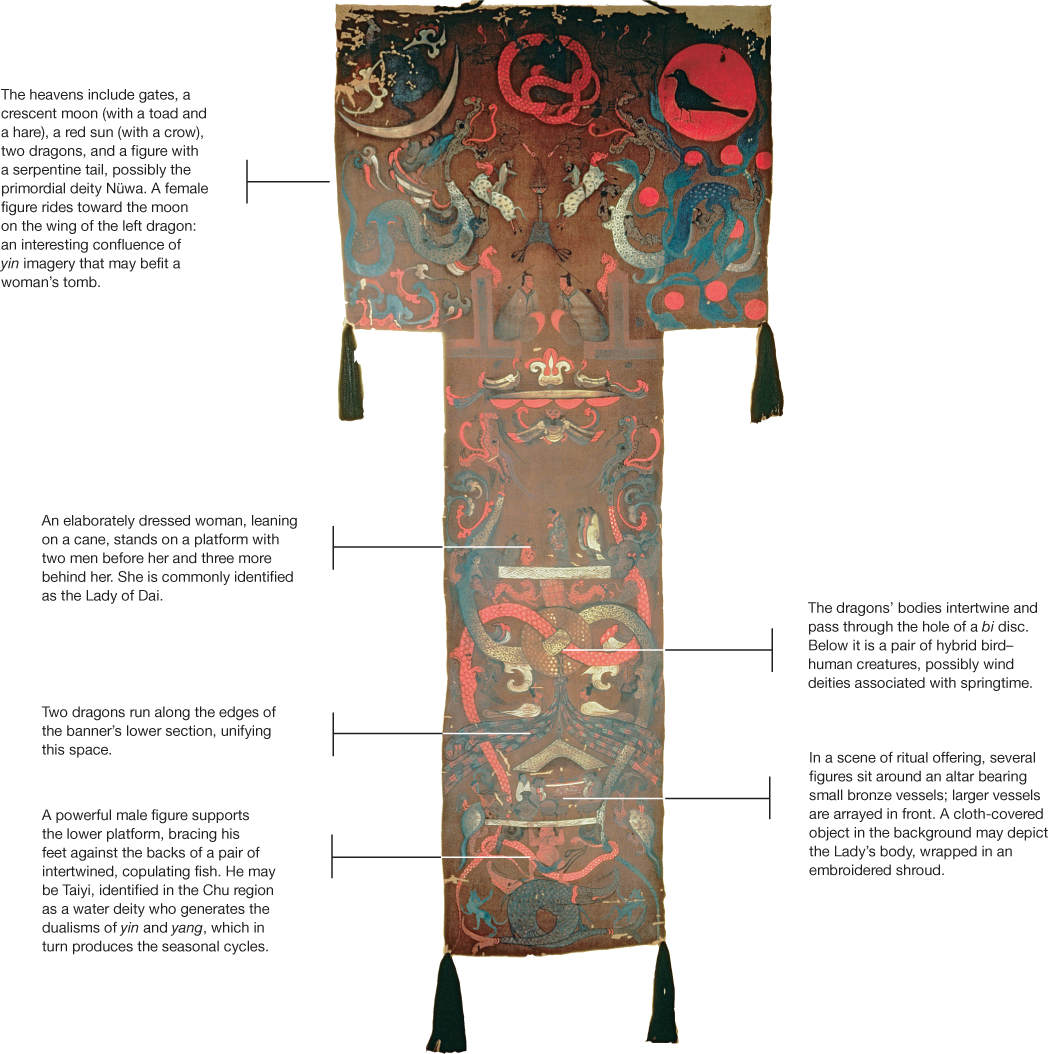
Material & Technique?
Silk, Wood, Lacquer (for coffin)
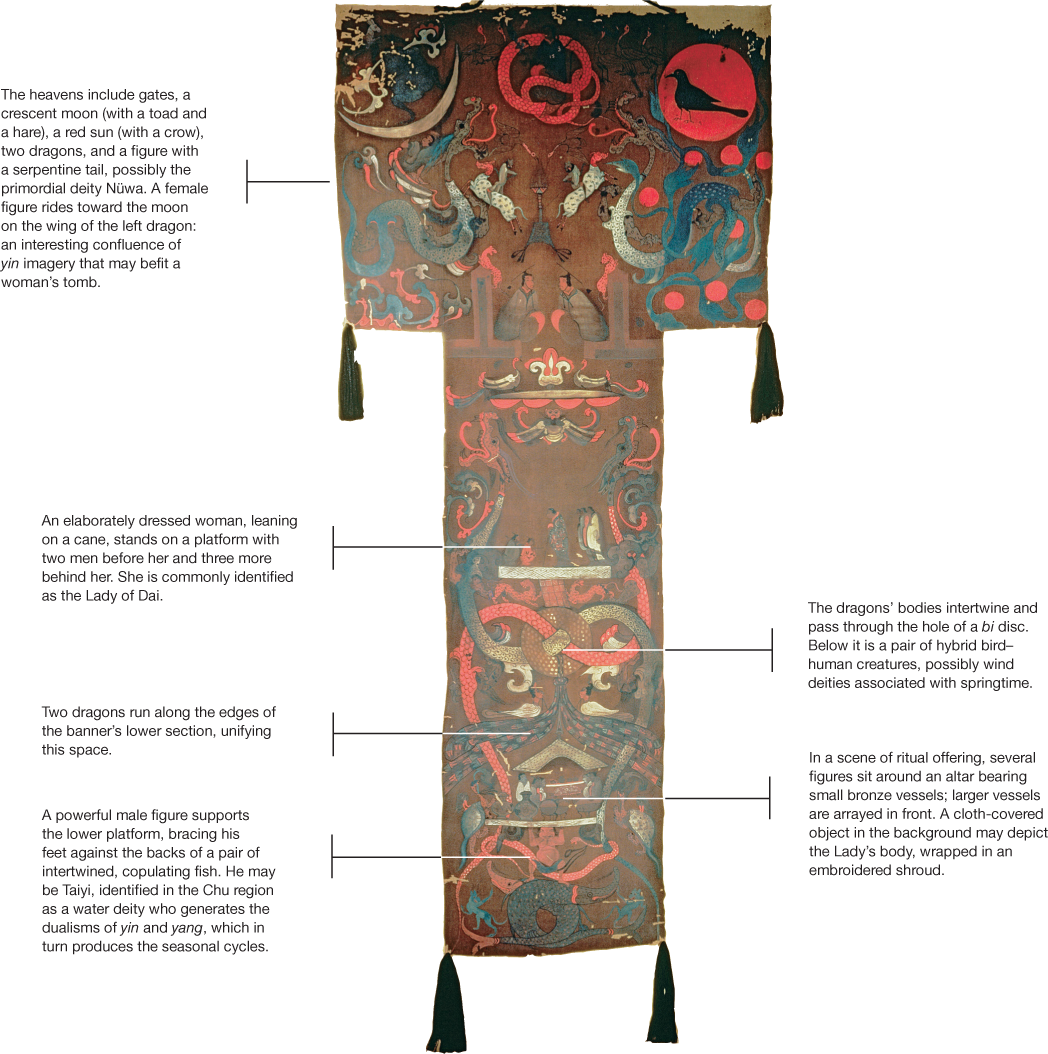
Significance?
Objects in the tomb no longer signaled status, but they served for what she might need in the afterlife. The silk banner included yin/yang, was used in the funerary procession, and place on top the innermost coffin to show Lady Dai’s journey to the afterlife
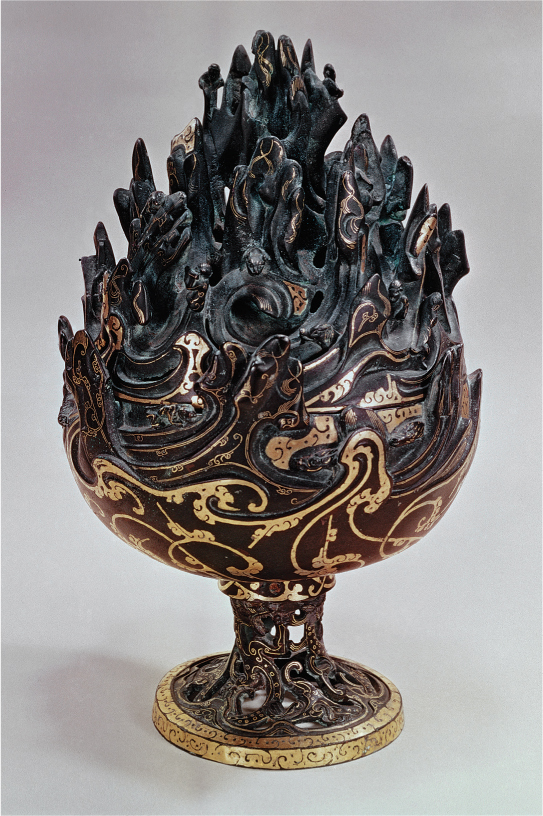
Subject?
Has mountain peaks, swirling water, rocks, and creatures carved in it
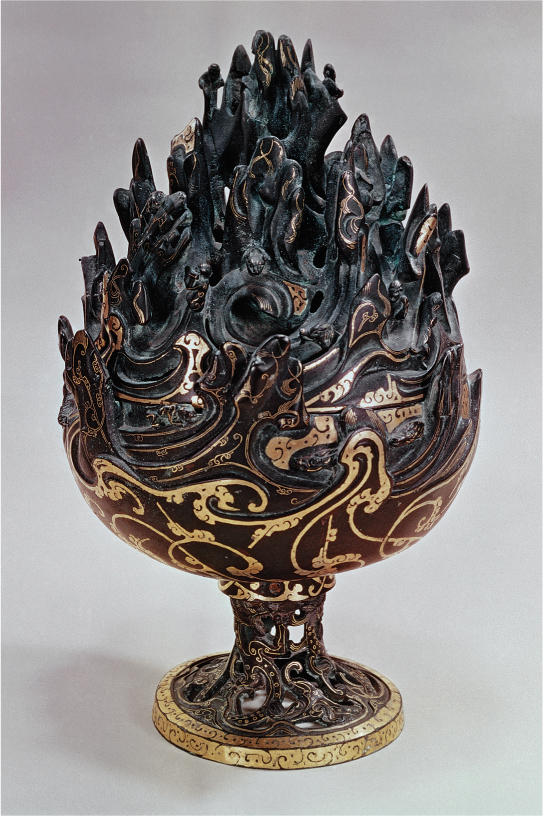
Site found?
Mancheng
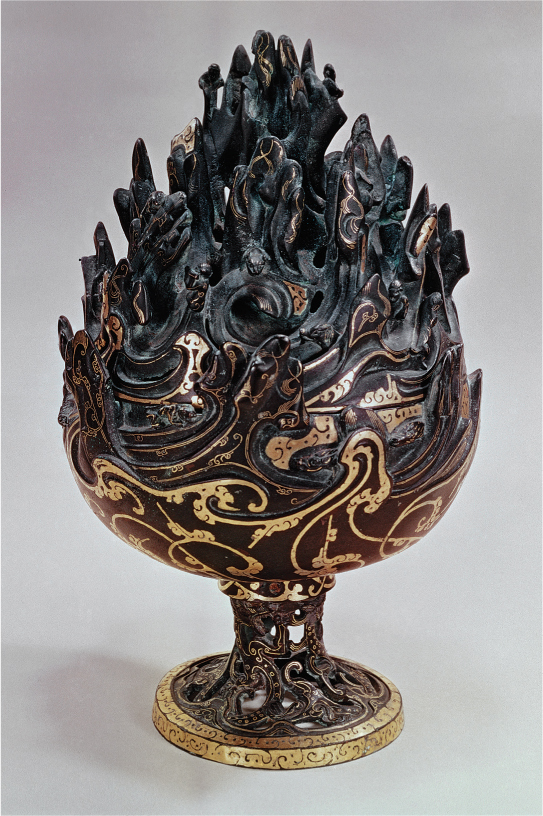
Material & Technique?
Bronze with gold inlay
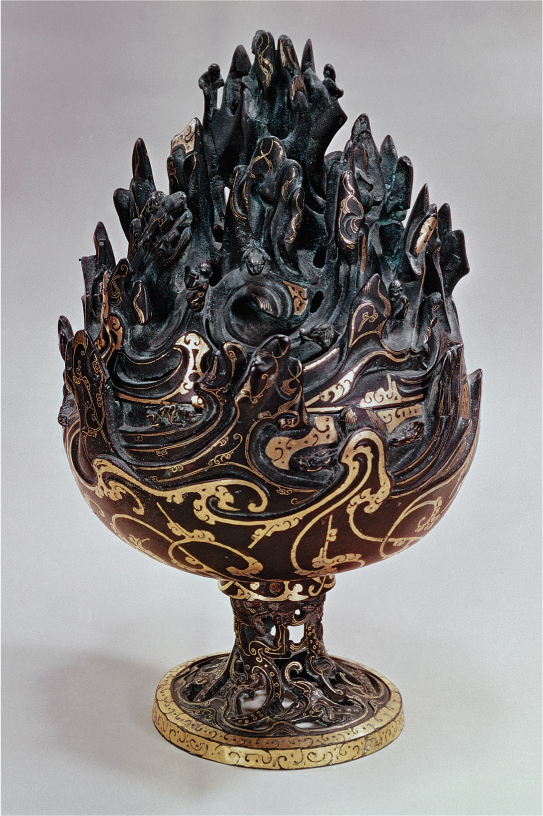
Significance?
A representation of the “island of the immortals” and the Daoist emphasis on nature. It is the earliest representation of a landscape
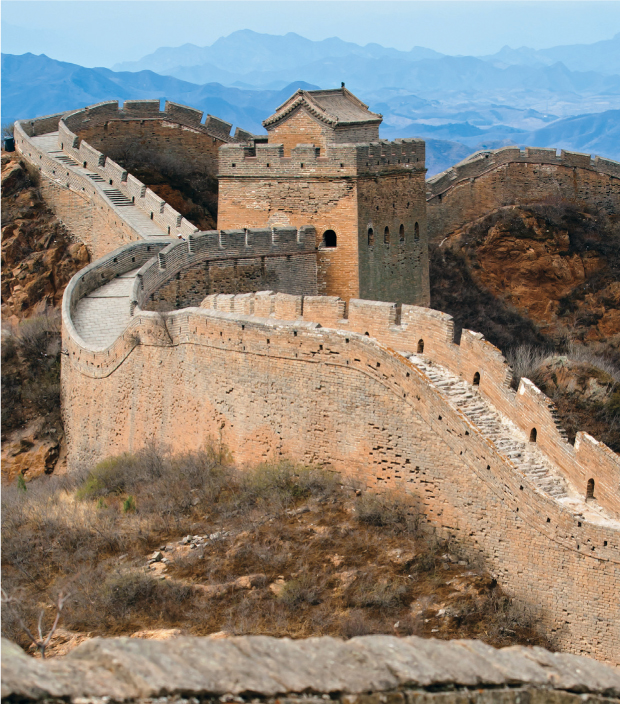
Subject?
Built stone wall that borders northern china
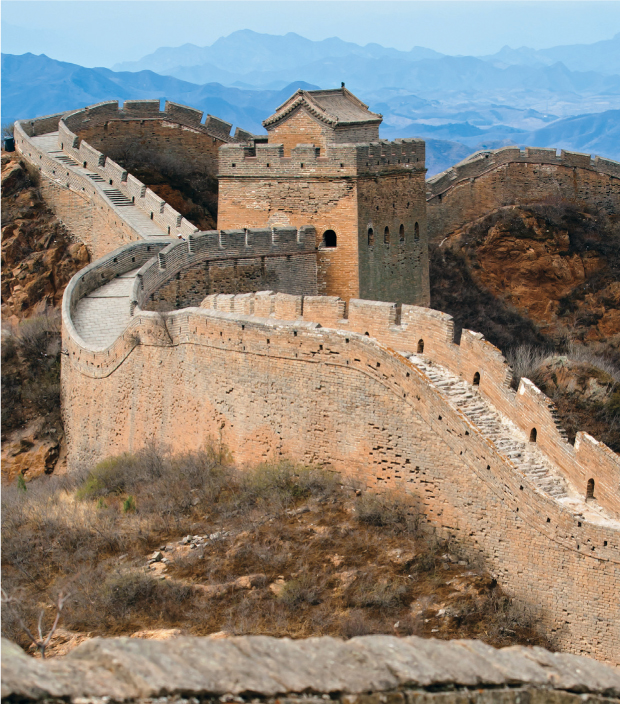
Site found?
Southwestern Gansu to Southern Manchuria
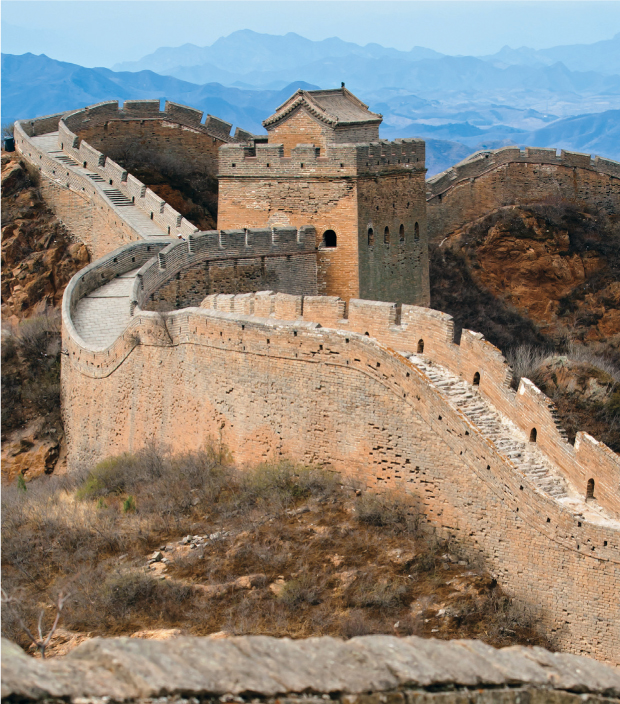
Material & Technique?
Stone - Pounded Earth
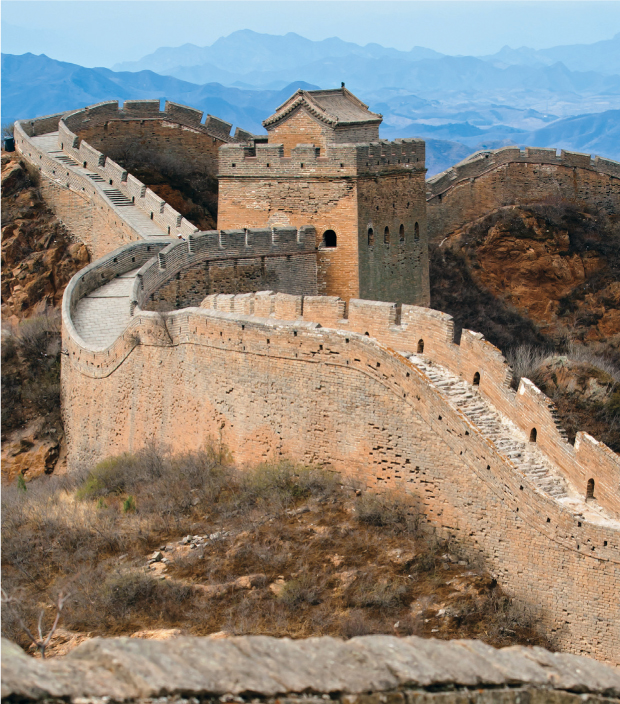
Significance?
Served as protection from the nomads and used to define Chinese territory
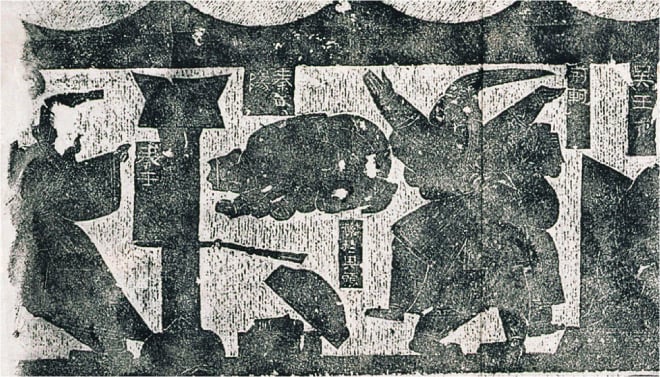
Subject?
Jing Ke’s attempted assassination on the Qin King, the poisoned dagger used that’s stuck in the column, and the King’s assistant bowing down in fear
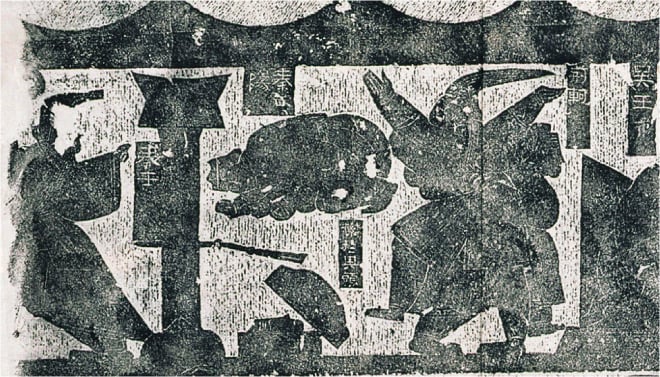
Site found?
Wu Liang’s Shrine in Jiaxiang county
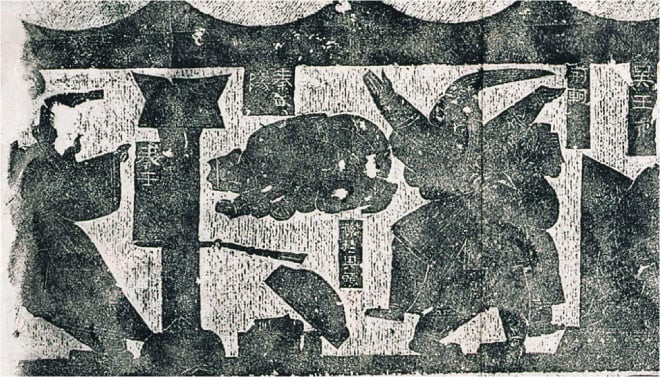
Material & Technique?
Ink rubbing of a bas-relief in stone
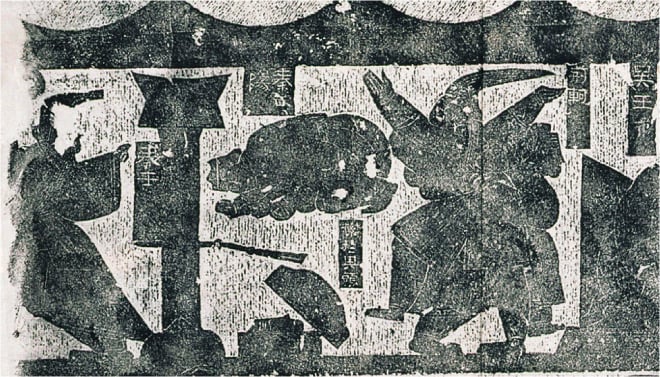
Significance?
Refers to a well-known narrative that conveys a Confucian moral lesson. Also depicts the Han use of single scene stories.
How does one achieve immortality?
Not letting the Hun and Po soul separate